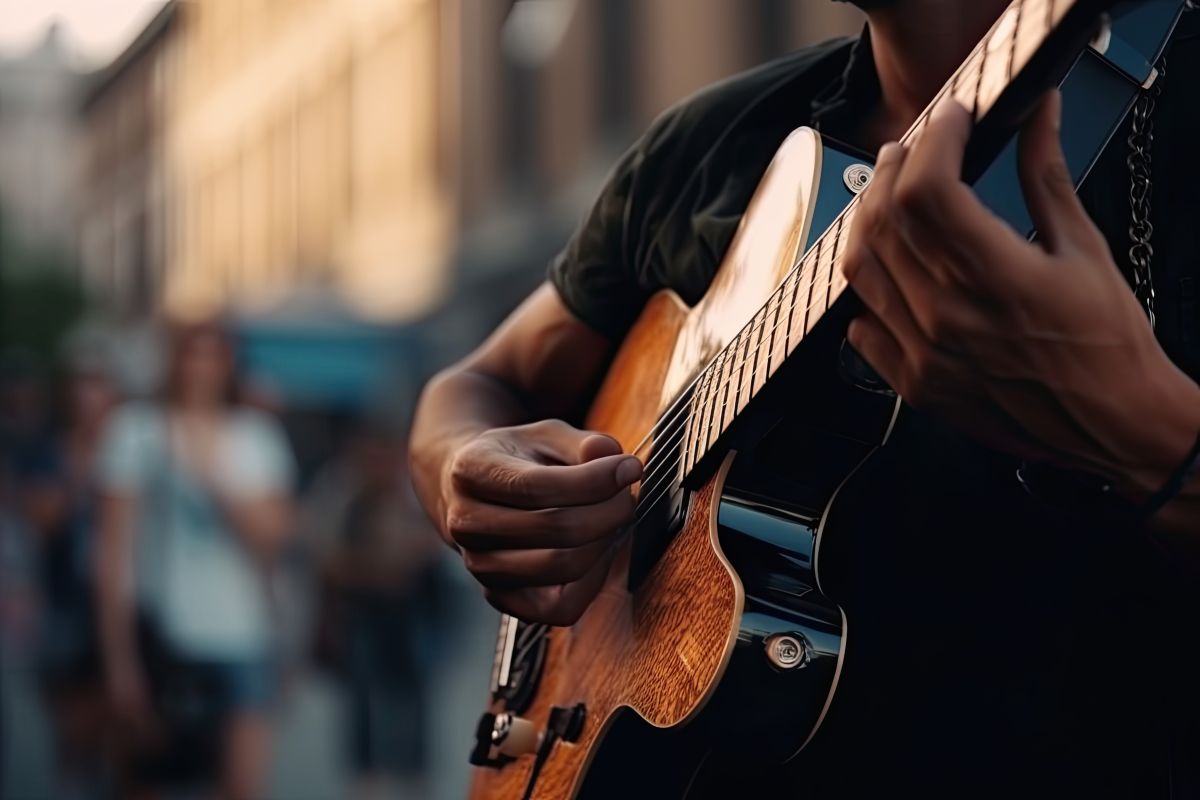The Essentials
Borrowed chords, also known as modal interchange, are harmonies borrowed from parallel scales or modes sharing the same tonic note. Read more here…
By introducing chords from different modes, musicians can evoke contrasting moods, ranging from melancholic and introspective to bright and optimistic.
Absolutely! Borrowed chords are highly versatile and applicable across various music genres. Read more here…
Welcome to a musical journey that will take us deep into the enchanting world of borrowed chords. Get ready to explore the captivating realm of unconventional harmonies that can elevate your music to new heights.
Borrowed chords, also known as modal interchange or borrowed tones, are harmonic elements borrowed from parallel scales or modes. These fascinating chords have the power to infuse your compositions with unexpected emotions, captivating your listeners’ ears and hearts.
Table of Contents
Let’s Explore Borrowed Chords: Unconventional Harmonies Unveiled

Music has the power to transport us to different emotional landscapes, and one of the most effective ways to achieve this is through the use of borrowed chords. Also known as modal interchange or borrowed tones, these harmonic elements add a touch of sophistication and intrigue to musical compositions. In this exploration of borrowed chords, we will uncover the fascinating world of unconventional harmonies and discover how they can elevate our music to new levels.
Keyfactbox
Borrowed chords are chords borrowed from parallel scales or modes that might not naturally belong to the key of a composition. Unlike traditional diatonic chords, which are derived solely from the parent key, borrowed chords introduce fresh and unexpected sound, creating musical surprises that captivate the listener’s ear.
The magic of borrowed chords lies in their ability to evoke a broad spectrum of emotions that may not be achievable through traditional chord progressions alone. By incorporating these chords into our compositions, we open the door to a world of creative possibilities. A borrowed minor chord, for instance, can infuse a sense of melancholy or introspection, while a borrowed major chord might add brightness and lift to a piece, sparking feelings of joy and optimism.
Borrowed Chords: Unlocking New Emotions in Your Music
Music is a language of emotions, and borrowed chords have a unique way of conveying feelings that traditional chords might not achieve. We’ll explore how borrowed chords can add depth, tension, and resolution to your compositions, allowing you to express a wide range of emotions. From evoking a sense of nostalgia with borrowed minor chords to adding a touch of brightness with borrowed major chords, you’ll find that these harmonic devices can truly speak to the soul of your listeners.
Borrowed Chords: A Journey Through Different Music Genres

Borrowed chords, also known as modal interchange or borrowed tones, have left a significant mark on the landscape of music across various genres. These harmonic elements, borrowed from parallel scales or modes, introduce refreshing and unexpected sounds that add depth and complexity to compositions. Join us on a fascinating journey as we explore how borrowed chords have influenced and enriched different music genres throughout history.
Classical Music
In the realm of classical music, borrowed chords have been utilized by renowned composers to create emotional depth and evoke various moods. From the timeless works of Mozart and Beethoven to the romantic compositions of Chopin and Tchaikovsky, these masterful musicians borrowed chords from different modes to add tension, resolution, and harmonic surprises in their symphonies, concertos, and sonatas.
Jazz
Jazz, with its focus on improvisation and innovation, has welcomed borrowed chords with open arms. Musicians like Miles Davis and John Coltrane incorporated borrowed chords seamlessly into their improvisations, giving rise to the modal jazz movement. By borrowing chords from parallel scales, jazz musicians add unique colors and extended harmonies to their chord progressions, elevating the sophistication of the genre.
Rock and Pop
In the world of rock and pop music, borrowed chords have played a crucial role in creating catchy and memorable tunes. Bands like The Beatles, Queen, and Radiohead have skillfully borrowed chords from other scales, breaking away from the standard diatonic progressions. This practice infuses their songs with unexpected twists and captivating harmonic shifts that resonate with a global audience.
Blues
The blues genre, known for its emotive and expressive qualities, also embraces borrowed chords to add nuances to its characteristic 12-bar blues structure. By incorporating borrowed minor chords and mixing major and minor tonalities, blues musicians infuse their music with raw emotion, allowing listeners to connect deeply with the stories conveyed through their songs.
Borrowed Chords Demystified: Understanding Modal Interchange
Understanding Modal Interchange, also known as Borrowed Chords, is a fascinating concept in music theory that opens up a world of harmonic possibilities. Here are four key points to demystify and grasp the essence of Modal Interchange:
- Modal Interchange Explained:
Modal Interchange involves borrowing chords from parallel scales or modes that share the same tonic note. For instance, in the key of C major, we can borrow chords from the parallel C minor scale, introducing harmonic color and emotional depth to our compositions. By interchanging chords between related modes, musicians can add a touch of surprise and complexity to their music. - Adding Emotional Depth:
One of the most remarkable aspects of Modal Interchange is its ability to evoke specific emotions in music. By incorporating borrowed chords, composers can introduce contrasting moods within a piece. Borrowing a minor chord from a parallel mode can add a melancholic or introspective tone, while borrowing a major chord can bring brightness and optimism. - Creating Unique Progressions:
Modal Interchange opens the door to exciting chord progressions that might not be possible within a single diatonic key. By borrowing chords, musicians can experiment with unexpected harmonic shifts, creating tension and resolution points that captivate the ear. - Understanding Functional Harmony:
Modal Interchange challenges traditional functional harmony, where chords are primarily based on their roles within a specific key. Instead, it encourages a broader exploration of harmony by introducing chords from different modes. This understanding of functional harmony in a broader context empowers musicians to craft more intricate and emotionally rich musical landscapes.
Breaking the Rules: Breaking Free with Borrowed Chords

Rules are meant to be broken, and music is no exception. In the world of music, there exists a thrilling phenomenon where composers and musicians break the rules to achieve extraordinary results – Borrowed Chords. By liberating themselves from the confines of traditional harmonic norms, artists embrace the power of Modal Interchange, infusing their compositions with captivating surprises and fresh sounds.
Tip: By embracing borrowed chords, you can breathe fresh life into your music and stand out as a trailblazer in the world of composition.
With borrowed chords to musical liberation
In conclusion, the realm of borrowed chords is a treasure trove of harmonic wonders waiting to be explored. Incorporating borrowed chords into your compositions not only showcases your creativity but also evokes unique emotions that touch the hearts of your audience. From classical to contemporary, borrowed chords have stood the test of time, transcending genres and pushing musical boundaries.
So, go forth and experiment with borrowed chords. Unleash the magic of modal interchange, defy conventional norms, and craft harmonies that resonate deeply with your listeners. Whether you’re a seasoned composer or an aspiring musician, borrowing chords will elevate your music to new heights and leave a lasting impression on the world. Let the enchanting allure of borrowed chords guide you on an unforgettable musical adventure!

